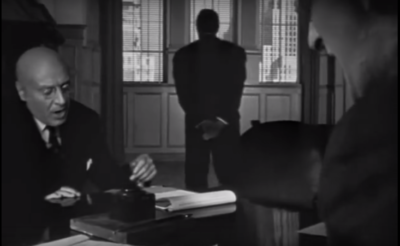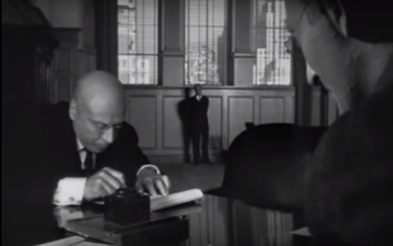Citizen Kane (dir. Orson Welles, 1941) is widely considered the greatest film ever made. The production context behind this film greatly influenced the end look and feel of this film.
Welles came into the fame after his radio broadcast of War of the Worlds in 1938. This led to the Hollywood studio RKO hiring him to make a film, which they ultimately gave him complete creative control over. This was practically unheard of in Hollywood, and meant that the film was exactly what Welles wanted it to be, as long as it stayed under the budget of $500,000. Welles’ history working in the theater influenced the film to look like a stage production in some ways. In addition, the cast were part of Welles’ theater group, so they were trained to act on stage, rather than on-screen.
There were a number of new inventions that made Citizen Kane an incredible film. The cinematographer, Gregg Toland, made use of a new deep focus lens, which allowed everything in the scene to be in focus all at once. This very effective in some scenes, because it creates optical illusions that change the way audience see some things. For example, in the shot below, Kane seems to be the same size as the window, but as he walks towards it, he is dwarfed by its size. This is reflects how Kane is becoming smaller as he loses his power and influence. Inventions like this one, and the use of them throughout Citizen Kane, make the film very innovative.


Citizen Kane is famously based on the life of William Randolph Hearst, an American businessman, politician and newspaper publisher. While Welles denied these accusations, Hearst used his immense power and influence to limit the amount of theaters where Citizen Kane could be shown. This led to the film failing at the box office, and Welles’ career being seriously harmed. However, the character of Kane – a prominent newspaper owner who tries to start a career in politics – reflects Hearst’s life in many ways. As Hearst was an easily recognisable figure for the audience, Welles’ portrayal of him led to the boycotting of the film. It wasn’t until 1956 when Citizen Kane was revived, that the film received the recognition that it deserved.
